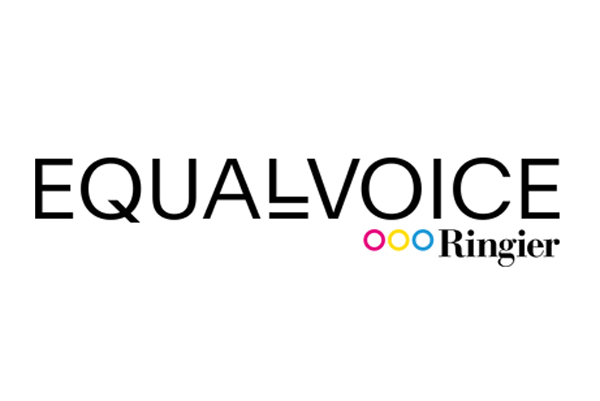Medienberichte in der Schweiz handeln zu 75% von Männern. Laut dem Global Media Monitoring Project 2016 lag der Anteil weltweit sogar bei 82%. 2019 stellt sich die Situation nicht viel anders dar. Auf Blick.ch liegt der Anteil der Artikel über Männer bei aktuell 75 % und der über Frauen bei 25%. Dieses Ergebnis wirft Fragen auf: Gibt es keine Frauen, über die es sich zu berichten lohnt? Geben Männer die besseren Schlagzeilen her? Oder ist das Verhältnis in den Medien schlicht Abbild der Realität in der Arbeitswelt, in der Frauen in Chefetagen weniger vertreten sind? Wissenschaftler sprechen von einem sogenannten «Gender Content Gap». Das Thema wird viel diskutiert, so auch bei Ringier als global agierendem Medienunternehmen.
«Wir wollen Männern und Frauen in unseren Medien gleichwertiger positionieren», sagt Annabella Bassler, Chief Financial Officer der Ringier AG. Sie hat die Initiative «EqualVoice» lanciert, die nach innen und aussen wirken soll, und die von Verleger Michael Ringier sowie CEO Marc Walder präsidiert wird. «Mit EqualVoice wollen wir Frauen in der Medienberichterstattung sichtbarer machen», sagt Marc Walder.
Kern der Initiative ist der EqualVoice-Factor. Er zeigt auf, wie sichtbar Frauen und Männer auf den Ringier- und Ringier Axel Springer Schweiz-Webseiten sind. «Bei jeder Webseite analysiert das Ringier eigene Data-Tool Sherlock, die Anzahl an Artikeln über Frauen und Männer», erklärt Katia Murmann, Chefredaktorin Blick Digital. Daraus entstehen zwei sogenannte Scores: Zum einen der Teaser-Score, der Bilder, Überzeilen, Titel und die Leads im Hinblick auf die Sichtbarkeit von Frauen und Männern auf den Webseiten der Ringier Medien auswertet. Und zum anderen der Body-Score, der den Text des jeweiligen Artikels analysiert, indem er konkret misst, wie oft Frauen und Männer zu Wort kommen. Die Personen auf den Bildern erkennt und zählt Amazon Rekognition systematisch aus. Die verwendeten Algorithmen und die Qualität der Daten werden regelmässig von Ringier Daten-Spezialisten und den Redaktionen überprüft, damit die künstliche Intelligenz kontinuierlich dazulernt.
«Dabei ist nicht das Ziel, dass wir auf einmal in allen Titeln 50% Männer und 50% Frauen haben», sagt Marc Walder. «Unsere Journalisten sind keine Aktivisten, jeder Titel hat seine eigene DNA, die es zu schützen gilt. Vielmehr geht es darum, dass die Chefredaktorinnen und -redaktoren ihre Teams für das Thema Gleichwertigkeit sensibilisieren. Wir sind überzeugt, dass Frauen und Männer gemeinsam viel mehr bewirken als Frauen und Männer alleine. Und: Es gibt mehr Frauen, über die es sich zu berichten lohnt.»
«Statt Quoten zu fordern, treiben wir mit unserer publizistischen und technologischen Kraft die Gleichstellung von Frauen und Männern voran und leben sie konkret im Alltag», sagt Annabella Bassler. «Die Gleichbehandlung von Frauen und Männern ist ein gesellschaftlich hoch relevantes Thema. Umso wichtiger ist es uns, dieses Thema in der gesamten Schweizer Gesellschaft über unsere Medien weiter voranzutreiben und unseren Beitrag zu leisten.»
Die Ringier Redaktionen beschäftigten sich bereits seit geraumer Zeit mit der Gleichwertigkeit in der Berichterstattung. So setzt der BLICK regelmässig Schwerpunkte zu Themen, die für Frauen relevant sind. Zudem hat Blick.ch-Chefredaktorin Katia Murmann den Edit-a-thon mit dem SRF und Wikipedia initiiert, der Frauenbiographien auf Wikipedia bringt.
Beim Beobachter zählt ein Team von Redaktorinnen und Redaktoren regelmässig das Geschlechterverhältnis aus und thematisiert die Verteilung an den Redaktionssitzungen. Und auch bei der Schweizer Illustrierten sowie den Wirtschaftsmedien ist das Thema im Redaktionsalltag präsent.
«Es gibt schon so viele gute Massnahmen», sagt Annabella Bassler. «Mit EqualVoice wollen wir unsere Kraft bündeln, voneinander lernen und diesem so wichtigen Thema eine Plattform geben.»
Heute wurde die Equal Voice Initiative allen Ringier Mitarbeitenden in einer Kick-off Veranstaltung vorgestellt. In jeder Redaktion werden nun Projektteams zusammengestellt, die den Auftrag haben, sich mit der Frage zu beschäftigen: Was heisst EqualVoice für den jeweiligen Titel – und wie können wir EqualVoice im Alltag umsetzen.
«Dass wir endlich in der Lage sind, mithilfe von Daten schwarz auf weiss zu belegen, wie stark Frauen und Männer in unseren Medien anteilsmässig vertreten sind, wird der Umsetzung von Gleichstellung enorm förderlich sein, da wir uns nicht mehr auf eine gefühlte Gleichstellung verlassen müssen», freut sich Annabella Bassler über den eigens für die Initiative EqualVoice entwickelten Algorithmus.
Die Auswertungen und Kennzahlen des EqualVoice Faktors werden den Mitarbeitenden regelmässig intern kommuniziert und im Jahresbericht der Ringier AG ab 2020 ausgewiesen.
Ringier AG, Corporate Communications
